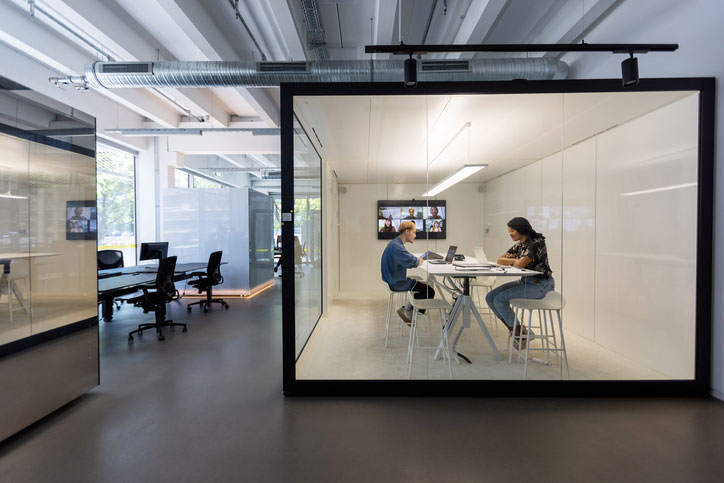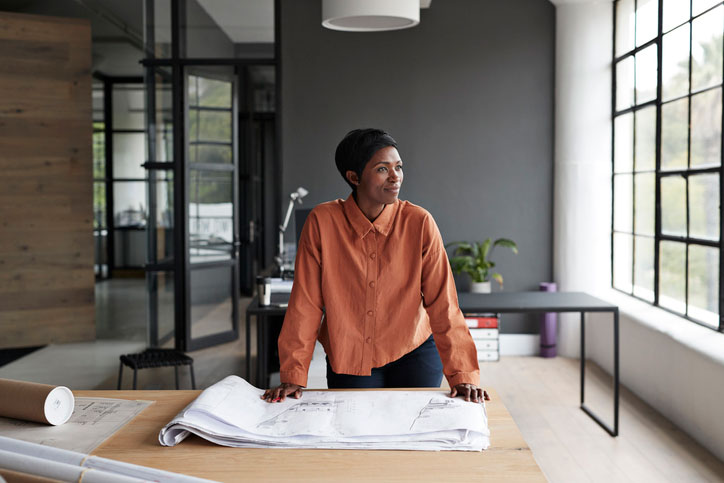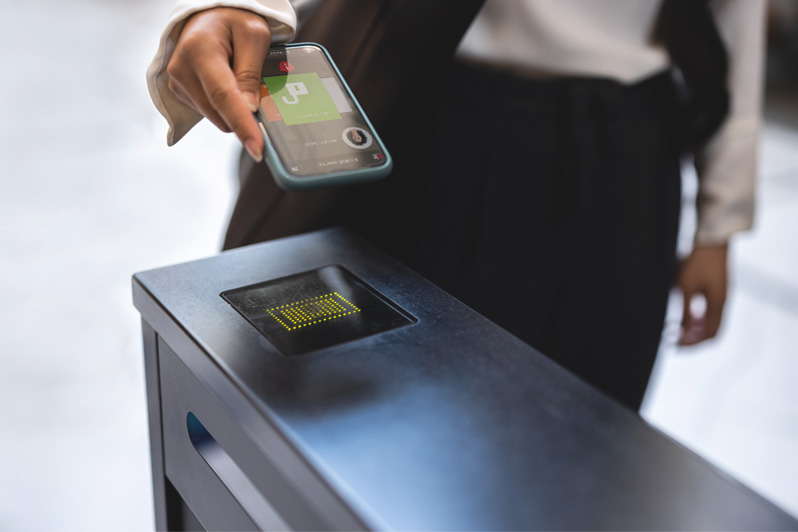After months of working from home or transitioning to new jobs, employees going back to the office will have some strong preferences about the environments they encounter when they return to work. Workers who proved they could complete projects and tasks on time from home while teaching their kids and managing their family’s health now want more flexibility to choose how and where they work. And after coping with all the uncertainties and anxieties that the pandemic has wrought, they want a safe, healthy, stress-free workplace where they can flourish.
Employers who want to attract, retain and engage the best employees in a post-pandemic work world need to create workspaces that respond to these visions and desires.
Here are five ways to improve your office environment so your employees can do their best work:
 1. Design the best workplace configuration for your employees’ needs
1. Design the best workplace configuration for your employees’ needs
With most employees doing at least some of their work remotely, the hybrid work model will likely stick around well beyond the pandemic. Now’s the time to consider what kind of workspace design and scheduling policies will equip your employees to be as productive and engaged as possible when they are at the office.
Some employees will thrive best in the traditional setup in which they always have an assigned workspace and work a typical 9-5 schedule at the office. Others might excel in an activity-based work model, in which they get to choose the workspaces that fit the tasks they need to complete. Rather than use the same designated office or desk every day, they move around frequently for better access to certain team members or the ideal room setting for doing their work. Another option is the “clubhouse” model that, as described in the Harvard Business Review, where employees use the office as a hub for meeting, collaborating and socializing, while they do their more focused work from home.
Think about ways you can improve your work environment by offering employees more choice while still ensuring those team members who need to work together closely are scheduled to be in the same office space at the same time.
 2. Incorporate work areas for individuals and small groups
2. Incorporate work areas for individuals and small groups
Many employees who got accustomed to privacy while working from home may not be eager to return to the completely open workspaces that were in vogue before the pandemic. If you’re planning to use an open or activity-based working arrangement, consider providing a variety of space-use options by reserving a small office or meeting room or two for quieter, more intense work.
Creative professionals on your staff might especially appreciate this accommodation. In a user survey by the file-sharing company We Transfer, whose customers consist mainly of creatives, 65% of respondents said they needed quiet or silence to do their work well.
It’s not just creative workers who see the value of a quiet retreat. HR Dive reported in a survey from Utah-based commercial builders Layton Construction that found employers ranking private, quiet spaces to work as one of the top items on their office wish lists.
 3. Make space for social connection
3. Make space for social connection
While many employees may want privacy and quiet to do their most focused work, they also may be craving the social interaction they lacked while working remotely. When they return to work, they’ll want an office environment that includes spaces for meetings, dining, recreation, or other shared activities.
As a blog post from the architectural firm Gensler notes, these face-to-face connections can enhance the work experience of many employees. “This is how we build community, strengthen relationships, coach, and mentor, and reinforce our shared purpose and culture,” writes Janet Pogue McLaurin, the firm’s Global Workplace Research Leader, in the post.
Social connectivity can help improve employee engagement and foster a workplace culture in which everyone feels included, supported, and appreciated.
 4. Choose interior design elements that promote wellness
4. Choose interior design elements that promote wellness
It may not be possible to give every employee a workstation facing a window or put a fitness center on the premises, but you can introduce office design features that boost workers’ physical and psychological well-being.
CNBC interviewed Brent Capron, the interior design director at the New York studio of architecture firm Perkins and Will, about how the post-pandemic office space will look. Capron expects workplace design to take inspiration from the hospitality industry by incorporating strategic lighting, furniture arrangements, art and decor, and even background music and scent technology into these spaces.
Your strategy to improve the office environment might include something as simple as adding plants to create a homier atmosphere and better indoor air quality. Upgrading to ergonomically designed office furniture can reduce the risk of physical strain and injury to your workers. Color choice can set the right mood for each workspace. Strategic placement of the copier or the coffee station might help promote fitness by adding a few extra steps to workers’ daily routines.
 5. Provide a safe workplace
5. Provide a safe workplace
The pandemic experience heightened concerns about workplace health and security, especially when employers needed to restrict access to office buildings and take other measures to prevent the spread of COVID-19. Workers want employers to continue to address those concerns and ensure that their personal property and physical safety will be protected as they return to work or start new jobs.
Heating, ventilation, and air conditioning system checkups can be crucial to creating an office environment that reduces the spread of COVID and other infectious illnesses. Investing in an HVAC upgrade might also help reassure employees that being in the office won’t make them sick. In a McKinsey survey, 62% of employees said improved air filtration could make them feel less stressed about returning to on-site work.
According to the Security Industry Association, health and safety concerns have also accelerated the demand for touch-free entry into office buildings and rooms that still allow the highest level of security. Access systems that can be operated via smartphone apps can make it easier to optimize both health and security.
Successful recruitment, retention, and engagement of employees requires offering them an attractive work environment where they feel safe and empowered to reach their full potential. The work model, space arrangements, design, and security technology you choose for your office setting will all play a role in how well your employees succeed when they return to work.
